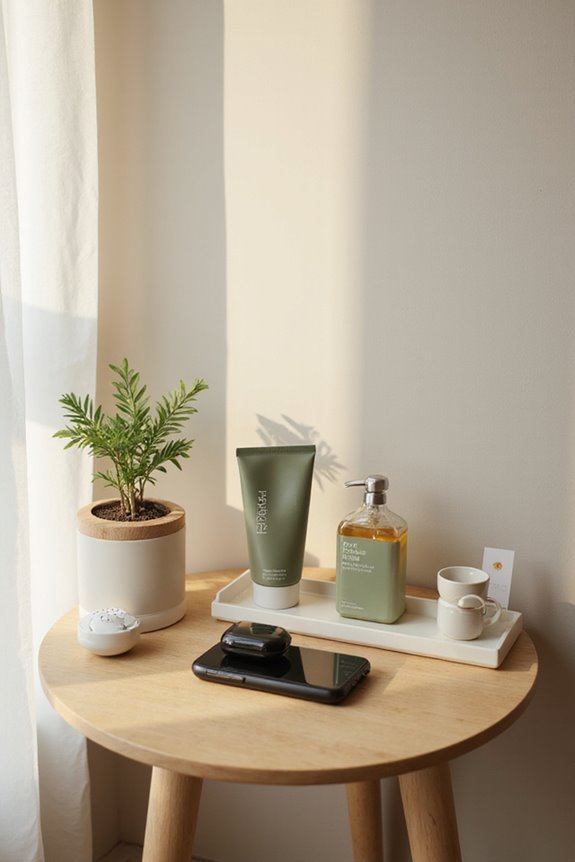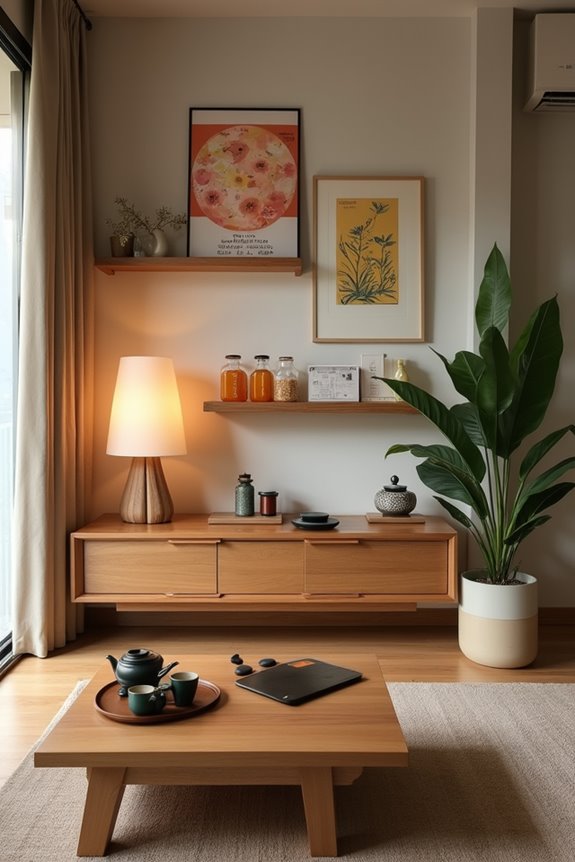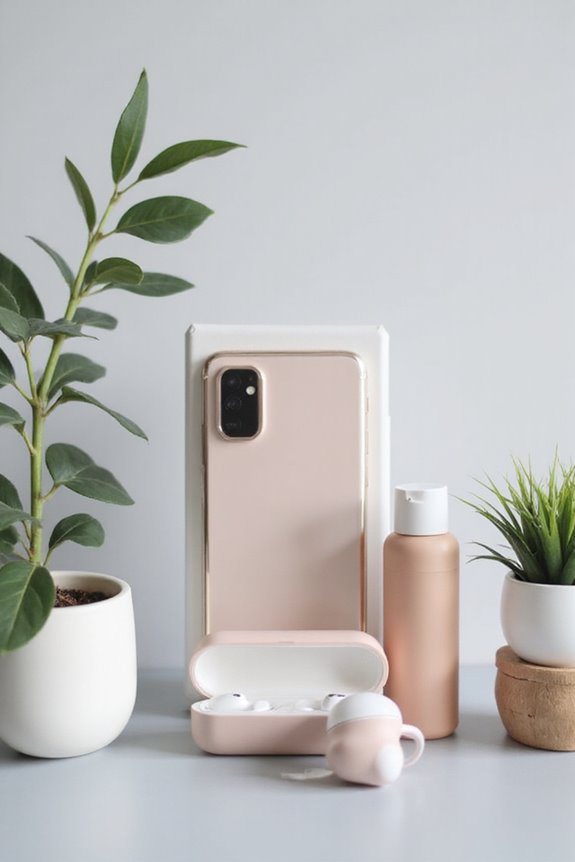Korean lifestyle trends are increasingly defined by affordable luxury, individualism, and sustainability. As the skincare market is projected to be worth $21.8 billion by 2025, brands like COSRX and Laneige exemplify quality at accessible prices. We’re witnessing a rise in personalized self-care products and ethical consumption, with over half of consumers willing to pay more for sustainable goods. Additionally, e-commerce continues to thrive, driven by innovative technology and changing shopping habits, presenting a landscape ripe for exploration.
Key Takeaways
- The affordable luxury trend is reshaping consumer preferences, driving demand for quality skincare products at accessible prices.
- Individualism and self-care are prioritized, with an emphasis on personalized and sustainable beauty solutions.
- Cross-generational influences impact purchasing decisions, blending traditional values with modern lifestyles.
- E-commerce continues to grow, enhancing convenience and supporting the shift towards digital payment solutions.
- Subscription services are popular but face challenges, requiring efficient logistics to maintain consumer satisfaction and engagement.
The Rise of Affordable Luxury and Dupes
As we explore the rise of affordable luxury in Korean lifestyle trends, it’s evident that this movement represents a considerable shift in consumer preferences. The Korean skincare market, projected to be worth $21.8 billion by 2025, showcases brands like COSRX and Laneige that provide affordable skincare solutions without compromising quality. These brands invest considerably in research and development, delivering effective products that appeal to a global audience. Meanwhile, in luxury fashion, trends thrive on soft minimalism and oversized silhouettes, merging style with comfort. The emergence of budget-friendly alternatives, such as dupes, enables consumers to experience luxury fashion and skincare without overspending, solidifying the importance of affordability in today’s market landscape. Such trends reflect a broader shift toward inclusive, accessible luxury experiences. Furthermore, the effectiveness of hyaluronic acid in hydration has made it a sought-after ingredient in many affordable skincare products, enhancing their appeal.
Individualism and the Shift to Self-Care

The rise of affordable luxury has opened doors for diverse expressions of individualism in South Korea, with self-care taking center stage. As the middle class grows, there’s an increasing individualism focus in how we approach self-care practices. Younger demographics are now more aware of the importance of holistic wellbeing, shifting from traditional beauty norms to treating skincare as a personal journey. The demand for personalized skincare solutions reflects this trend, with consumers actively seeking products tailored to their specific needs. E-commerce platforms have made it easier to access clean, sustainable beauty items that align with individual lifestyles. Technological advancements further enhance these self-care experiences, allowing us to engage effectively with our unique skincare routines and preferences. Additionally, many consumers are drawn to Korean skincare sets that offer tailored solutions for different skin concerns, further promoting the self-care movement.
Cross-Generational Purchasing Behavioral Trends

Cross-generational purchasing behavioral trends are increasingly shaping consumer choices, highlighting the importance of family dynamics in decision-making processes. Nowadays, we often find families—including parents, children, and even grandparents—coming together to influence purchasing decisions. Such cross-generational interactions stem from shared experiences and align with traditional Korean values, which emphasize family and respect for elders. In many cases, financial considerations play a significant role, as families navigate shared financial goals and constraints. Additionally, technological integration aids communication, making it easier for different generations to share opinions and collaborate on purchases. This merging of generational values leads to a more thoughtful approach to spending, ensuring that consumer choices reflect the diverse perspectives of each family member involved.
Embracing Multi-Generational Lifestyles

Maneuvering the complexities of modern life, many individuals find themselves embracing multi-generational lifestyles that reflect current societal shifts. While traditional multi-generational living has declined, with younger generations often opting for privacy in their own spaces, older adults continue to prioritize family-oriented living arrangements. This divergence has led to the emergence of co-living spaces, which blend elements of both privacy and community. In these shared spaces, younger adults can enjoy independent living while still benefiting from limited interactions with family members. Additionally, as lifestyle demands evolve, the focus on care responsibilities diminishes within family structures, prompting both generations to seek new arrangements and support systems for quality of life, reflecting a balanced approach to modern challenges.
The Impact of K-Culture on Consumer Habits

While many consumers around the world are driven by trends and cultural phenomena, the impact of K-Culture on purchasing habits has become increasingly significant, particularly among younger demographics. The K-Culture influence is evident as media such as K-dramas inspire immediate purchases of fashion and food items featured onscreen. Younger viewers, who frequently engage with Korean content, develop a sense of familiarity that leads to increased demands for authentic Korean products. Additionally, endorsements from Korean celebrities amplify these consumer preferences, driving global consumerism. Retailers strategically utilize this cultural connection to enhance market expansion, integrating K-Culture into their offerings. Such strategies not only attract younger consumers but also contribute to the burgeoning niche markets for Korean goods, reflecting an evolving landscape in global shopping behavior. Moreover, the popularity of official merchandise items like light sticks and recipe books demonstrates the deepening connection fans have with K-pop and cultural exports.
Sustainability and Ethical Consumption Demands
As consumers increasingly prioritize sustainability, the demand for ethically produced goods in South Korea has risen markedly. Many of us are turning to sustainable fashion brands that emphasize ethical sourcing, often preferring products crafted from organic and natural materials. Reports show that nearly 55% of South Korean consumers are willing to pay more for sustainably produced goods, indicating a significant shift in purchasing behavior. Brands like Frudia and Cosrx are leading the way by offering cruelty-free and vegan cosmetics, appealing to our growing interest in ethical consumption. The distribution industry is also responding by reducing waste through reusable and upcycled products, highlighting the importance of eco-friendly packaging. This evolving landscape demonstrates our commitment to making environmentally conscious decisions, much like the shift towards energy-efficient cooking that preserves flavor and nutrition.
The Digital Dilemma in Retail Experiences
In an era marked by rapid digital transformation, South Korean retailers are facing significant challenges that stem from the integration of online and offline shopping experiences. As consumer expectations rise, there’s an increasing demand for seamless digital integration, requiring retailers to adapt quickly. Many are embedding advanced technologies like AI and cloud computing to enhance engagement and efficiency; however, this change presents hurdles. High initial costs, the need for skilled employees, and concerns over cybersecurity persist, complicating the movement. While e-commerce continues to grow, brick-and-mortar stores endeavor to innovate and create immersive experiences. Ultimately, balancing these elements is vital for meeting evolving consumer needs and ensuring competitive advantages in a digitally-driven market.
Subscription Services Revolutionizing Shopping
Subscription services are transforming the shopping landscape in South Korea, driven by a strong demand for personalized products and convenience. The subscription box market is expected to reach USD 3.59 billion by 2033, highlighting its rapid growth. Consumers seek personalized experiences across categories like beauty and health, with tailored offerings enhancing satisfaction. However, we must be aware of subscription fatigue, which can arise from repetitive deliveries and excessive product accumulation. Efficient logistics networks guarantee timely services, boosting user experiences and encouraging renewals. As digital engagement flourishes, South Koreans can easily manage subscriptions and discover new brands, further fueling market expansion. Consequently, the subscription model is reshaping consumer preferences, reflecting a growing expectation for customized and convenient shopping solutions.
Innovative Technology and Retail Transformation
Innovative technology is reshaping retail in South Korea, driving significant changes in consumer experiences and operational efficiencies. The rise of tech-driven retail is evident through the rapid adoption of mobile POS systems, enhancing transaction speed in high-traffic locations like supermarkets. Additionally, super apps integrate in-store and online shopping, enabling personalized marketing and streamlining payments. Furthermore, AI and IoT technologies are improving inventory management, allowing retailers to reduce waste and optimize operations. As digital innovation continues to advance, Korean retailers are increasingly focusing on seamless omnichannel experiences. With over 41.43% of revenue stemming from e-commerce, the shift toward fintech solutions and digital payments further supports this transformation, ensuring that Korean consumers enjoy efficient shopping experiences, regardless of the platform they use.
Frequently Asked Questions
How Do Lifestyle Trends Differ Among Various Age Groups in Korea?
When we explore how lifestyle trends differ among age groups in Korea, we see youth preferences lean towards self-care and digital engagement, while senior habits emphasize stability and health management, showcasing distinct generational values.
What Role Do Social Media Play in Shaping Korean Consumer Habits?
Social media’s essential for shaping our consumer habits. We engage with influencer marketing on social platforms, guiding our choices and preferences. It’s fascinating how these digital interactions drive our purchasing decisions and lifestyle trends.
How Is Mental Health Influencing Purchasing Decisions in Korea?
We’re witnessing an explosion in purchases! Mental health’s influencing consumers to seek mindfulness products and wellness experiences like never before, prioritizing emotional well-being above all else. It’s a revolutionary shift in how we shop!
Are There Any Notable Korean Brands Focusing on Sustainability?
We’ve noticed brands like Continew and Purito leading the way in eco-friendly fashion and sustainable beauty. Their innovative approaches to upcycling and cruelty-free practices inspire us to embrace a more sustainable lifestyle together.
What Impact Does Online Shopping Have on Traditional Retail in Korea?
As the saying goes, “A stitch in time saves nine.” Online shopping drives retail evolution in Korea, forcing traditional stores to adapt or risk becoming obsolete, emphasizing convenience and swift service in our ever-busy lives.





